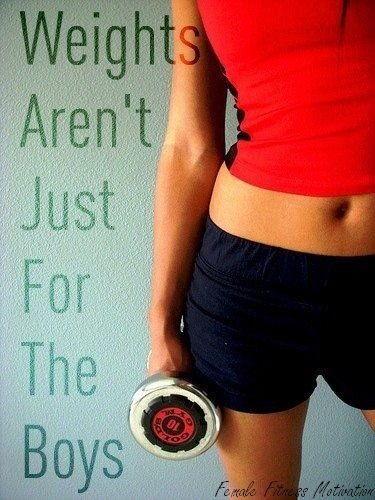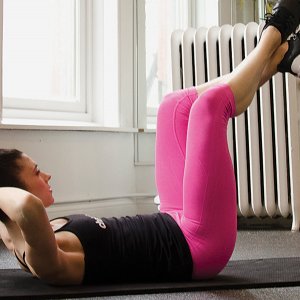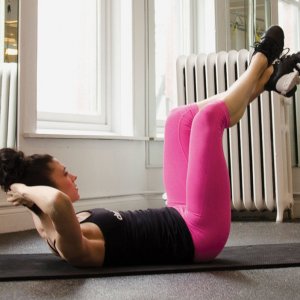 Guest blogger: Bonne Marcus
Guest blogger: Bonne Marcus
A fitness industry expert for 27 years, Marcus holds numerous certifications from the Aerobic Fitness Association of America (AFAA), including Step, Spin, Bosu™, Pre/Post Natal, Youth Fitness, Aqua, and Personal Training. She has taught for New York City’s top health clubs, including Crunch, New York Health and Racquet, and Reebok Sports Club. A recognized name on Long Island, Bonne has taught at Dany Holdstein’s Two Worlds, North Shore Health Club, LA Fitness, Sport time, Equinox and currently teaches at the Sid Jacobsen JCC in Roslyn. Learn more at getfitwithbonne.com.
Now more than ever before, fitness information is available wherever we turn. Whether it's found on TV, in books, online, or even from your best friend, information about fitness and health is constantly being thrown at us. As a trainer, I’ve discovered that most of my clients suffer not from a lack of information but from too much of it. Research-based info gets confused with popular belief; one person’s facts get confused with another’s outdated beliefs. Pretty soon, we do not know what to believe, and sometimes, it’s far easier to just give up. If you want to maximize your fitness program, it’s going to take the correct information. So let’s review some of the most common fitness mistakes and myths that can be easily avoided.

Fiction: Physical fitness and health are the same thing.
This common misconception is the reason most people experience the frustration of working out religiously and hold on to the same 10 pounds.
Fact: Health is defined as the state where all the systems of the body (nervous, muscular, skeletal, circulatory, lymphatic, etc.) are working in an optimal way. Fitness is the physical ability to perform athletic activity. The solution is simple; always put your health first if you wish to achieve physical fitness.
Fiction: Genetics have already determined my body type.
Go ahead and blame your parents all you want for your genetics. Spend some time feeling good and sorry for the body you were given. Feel better? Good. Now it’s time to do something about what you can control.
Fact: When people talk of “bad genetics,” they are usually talking about metabolism. While the two are related, they are not the same thing. Metabolism is the way the body processes or burns through food. The higher the metabolism, the more calories the body burns. The lower the metabolism, the less fuel the body burns and the more it is stored as body fat. Genetics certainly influence metabolism, but you are in control of many other factors, including activity level, food intake, and body composition. We didn’t choose the body we have, but we can choose what we do with it.
Fiction: I don't have time to exercise.
It’s funny... we never hear anyone say, “I don’t have the time to brush my teeth,” or “Sorry, I don’t have the time to bathe.” Let’s face it — we all lead very busy lives. Family, career, friends, projects, trips... you name it, our plates are pretty full. But the real problem here is the belief that you need a huge amount of time for exercise.
Fact: You can spend 30 minutes a day and grab an effective workout. You don’t need to spend all day and night in a gym. Look at your schedule and you’ll see what options you have. Can you wake up half an hour earlier? Or can you work out during your lunch break? There are 168 hours in a week. Spending about three or four of those hours in pursuit of health is not really that much to ask, is it? In order to take care of ourselves, we need to make the time.
Fiction: It’s too expensive.
The fitness industry is a multi-billion dollar industry. It is expensive to join the latest posh health club, hire the most in-demand personal trainer in the city, or to purchase the latest home gym equipment. And even if you can afford all of these things, there is no guarantee that you will reach your fitness goals.
Fact: You can effectively exercise in your own home without any equipment. What about push ups, squats, lunges, and crunches? You think you don’t have weights? Think again: I’ve had clients in their homes perform biceps curls using gallon milk jugs filled with water — don’t laugh, those things are heavy! So are cans off your pantry shelf. Try a backpack loaded with books or that suitcase in the closet. Look around your home, and you’ll find a dozen options for no-cost equipment.
You can always purchase a few exercise tools for a minimum investment, which will afford you even more variety. A couple exercise bands, one or two sets of hand weights, and an inflatable exercise ball should run no more than about $50. If you can’t afford a trainer on a regular basis, then hire one to instruct you on proper exercise technique and ask her to design you a program you can do on your own. Meet once every two weeks to evaluate your progress.
Fiction: Cardio is most important.
Aerobic exercise is wonderful. It strengthens the heart and lungs, burns calories, and there is nothing like a jog through the park on a sunny day. But in and of itself, it is not enough.
Fact: Next time you are at the health club, take a look at the people who do nothing but aerobic exercise. Then take a look at the people who are spending their time lifting weights. Individuals who correctly incorporate strength training in addition to cardiovascular exercise not only have better-looking bodies, but are stronger and have a lower percentage of body fat as well.
Fiction: If I lift weights, I'll get too bulky.
This statement is commonly heard from women, usually from those who have seen women's bodybuilding competitions on TV and thought, “Wow, why is that guy wearing a bikini?”
Fact: Women’s hormones will not allow them to build huge, ripped muscles like men because they lack the amount of testosterone necessary to do this. The only way a woman will look like a man is to alter her hormonal levels, usually with the use of steroids.
If a woman works out with weights on a regular basis and eats supportively, then changes will occur — but you're not going to look like a bodybuilder. “Toning” is the same thing as building attractive, strong, and shapely muscles. A woman can build muscles and not look like a man. If building huge muscles were that easy, we’d all be walking around looking like Arnold Schwarzenegger.
Fiction: When you're just getting started, join your super-fit friend for a workout.
If you are a beginner, your body isn’t prepared for the strain exercise can place on it. As a result, engaging in an exercise program with little foresight and planning can lead to frustration, injury, and burn-out. If you attempt too much too soon, it may lead to soreness, fatigue, and/or injuries.
Fact: Work at your own level; start out slowly, and gradually increase duration and level of difficulty as your body progresses. Getting fit is not an overnight proposition, it’s a lifestyle commitment. Don’t expect immediate dramatic changes in your body shape or weight loss. Although changes are happening internally, most external benefits won’t become visible for the first four to six weeks.
Fiction: The best way to lose weight is by severely reducing caloric intake.
Starvation will result in weight loss... but so will chopping off a body part, and that makes about as much sense.
Fact: The problem with dramatically cutting your food intake is that once your body realizes it is being starved, it will literally hold onto stored fat and refuse to let it go. The body then begins to use other stored nutrients to fuel activity — namely protein. Once this occurs, muscle mass decreases, and so does metabolism. In fact, in order to burn fat and build muscle you need to eat.
Leading a healthy lifestyle and becoming fit starts with obtaining the facts about exercise, nutrition, and how to incorporate both into one’s life. If the information we have does not work, then it is time to use new information that does. Ignore the fiction and use the facts.
Have a fitness question? Email me at [email protected]!
—Bonne Marcus
- adminbg's blog
- Log in or register to post comments








